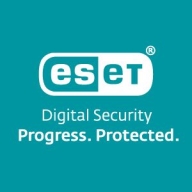

SECDO Platform and ESET Inspect compete in the cybersecurity domain. SECDO Platform edges ahead in support and pricing, while ESET Inspect’s comprehensive features make it a strong contender.
Features: SECDO Platform offers automated threat detection, incident response, and strong automation. ESET Inspect provides multi-layered protection, extensive integration options, and comprehensive security measures. SECDO's automation stands out, while ESET's flexibility and overall security are key advantages.
Room for Improvement: SECDO Platform could improve scalability, user training resources, and scaling options. ESET Inspect could enhance reporting features, reduce complexity, and simplify its reporting modules.
Ease of Deployment and Customer Service: SECDO Platform is noted for quick deployment and responsive customer service. ESET Inspect requires more setup time but is supported by a knowledgeable service team.
Pricing and ROI: SECDO Platform is cost-effective with a quick ROI. ESET Inspect, though higher priced, is seen as a worthwhile investment for its extensive features and long-term benefits.
| Product | Market Share (%) |
|---|---|
| ESET Inspect | 1.3% |
| SECDO Platform | 0.3% |
| Other | 98.4% |

| Company Size | Count |
|---|---|
| Small Business | 5 |
| Large Enterprise | 2 |
ESET Inspect is an essential component to help ensure the highest level of enterprise security. While standard ESET Endpoint Security provides strong protection, ESET Inspect takes your environment's security to a new dimension. A security tool is needed to help security professionals protect their sensitive data and detect and investigate security incidents, advanced threats, and targeted attacks or breaches on endpoint devices. ESET Inspect is a tool that offers the peace of mind of continuous protection and security monitoring in a powerful and easy-to-use solution.
SECDO enables security teams to identify and remediate incidents fast. Using thread-level endpoint monitoring and causality analytics, SECDO provides visibility into every endpoint along with the context necessary for understanding whether a suspicious activity is a genuine threat. Unique deception techniques force threats like ransomware out into the open early, and trigger automated containment and remediation.
SECDO provides the most intuitive investigation experience available so you can quickly unravel complex incidents across the organization. You can investigate incidents detected by SECDO as well as alerts from the SIEM. SECDO visualizes the attack chain so you immediately understand the “who, what, where, when and how” behind the incident. Then, based on an analysis of exactly how endpoints were compromised, SECDO surgically remediates the incident with minimum user impact.
We monitor all Endpoint Detection and Response (EDR) reviews to prevent fraudulent reviews and keep review quality high. We do not post reviews by company employees or direct competitors. We validate each review for authenticity via cross-reference with LinkedIn, and personal follow-up with the reviewer when necessary.